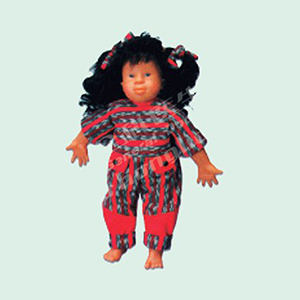ADA MED SUPPLY LIMITED
Phone:+86 19937901373
Tel:+86-0379-65160607
Email:adaanatomy@adaanatomy.com


Down syndrome is a common genetic disorder that affects about 1 in every 700 to 1,000 births worldwide. With the increasing social awareness of care for special children, the need for care for babies with Down syndrome continues to grow. It is important for caregivers to have specialized care skills for babies with Down syndrome, and the Down Syndrome Baby Care Model is an innovative tool to meet this need.

Down Syndrome Infant Care Model
1. The growth of market demand
According to Global Health Organization statistics, the incidence of Down syndrome is relatively stable worldwide, accounting for about 0.1-0.15% of births. As the number of births increases and public health awareness increases, the number of people with Down syndrome is on the rise. This trend is fueling a rising demand for specialized care for babies with Down syndrome. At the same time, there is an increasing demand from parents and caregivers for specialized care methods, especially for early intervention, rehabilitation and long-term care.
In addition, with the advancement of technology in the medical industry, the ways and means of nursing training are also changing. As a highly simulated and actionable simulation tool, the Down syndrome infant care model provides a safe and risk-free training platform for caregivers. Through these models, caregivers can practice common nursing skills and emergency response strategies in a simulated environment to better provide accurate care for babies with Down syndrome.
2. Data support: The growth of care demand
According to a survey in the Journal of Nursing, more than 65 percent of caregivers report that their lack of systematic training and practical experience in the care of infants with Down syndrome leads to a high rate of errors in actual care. Another market study on the need for Down syndrome care showed that nearly 85% of parents expressed a desire for medical institutions to provide more training and support in the care of babies with Down syndrome, especially the professional competence of caregivers.
These data show that the demand for care models for babies with Down syndrome is growing among caregivers. With the popularization of special infant care knowledge and the improvement of care quality, the market demand for such training models is expected to continue to expand.
3. Trend: The rise of digital and analog training
With the continuous development of the medical industry, digital and simulation training technology has become an important trend in nursing training. Simulation training can not only provide a more realistic operating experience, but also help students identify their own shortcomings through data analysis, so as to make targeted improvements. The Down Syndrome infant care model has become an important tool to meet this trend through high simulation and feedback mechanisms.
Market forecasts indicate that the global medical training market will grow at an annual rate of about 8%, with the market share of simulation training equipment and nursing models expected to continue to increase. The Down syndrome infant care model is part of this growing trend to become the industry standard.
4. Conclusion: Market demand is growing day by day
The market demand for Down syndrome infant care models is growing, especially in terms of improving the quality of care and expertise. This model can not only help nursing staff improve the level of clinical operation, but also help parents better understand and cope with the challenges of infant care through simulation practice. With the increasing demand for care of infants with Down syndrome, the application of relevant nursing training tools will become an important direction for the future development of the medical industry.